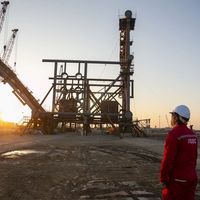Iran Dams Decrease By 10 Percent Amid Water Crisis
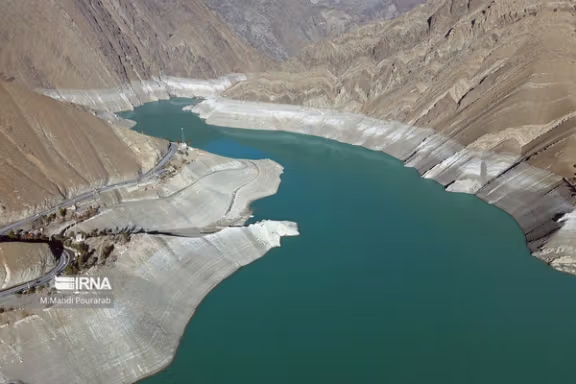
Latest figures reveal the volume of water in Iran’s dams over the past six months has decreased by 10 percent compared to the same period last year as Iran's water crisis deepens.

Latest figures reveal the volume of water in Iran’s dams over the past six months has decreased by 10 percent compared to the same period last year as Iran's water crisis deepens.
From the beginning of the current water year, September 23 to March 16, Iran’s dams collectively held 23.18 billion cubic meters (bcm) of water, indicating a 10-percent loss.
Statistics also demonstrate that during this period, 33 major dams in the country, including those in Tehran, Isfahan, Fars, Razavi Khorasan, Khuzestan, Bushehr and Markazi provinces, had less water than last year.
According to the report released by state news agency ISNA, the amount of water input in Iran’s dams until March 16 equaled 13.2 bcm, down 25 percent as compared to last year for which the number was 17.6 bcm. This is while the output from the country’s dam reservoirs has increased by 7 percent to 11.71 bcm.
Iran’s total rainfall in the current water year from September 2023 to March 2024 was 123.9 millimeters (mm), which represents a 27 percent decrease compared to the long-term average of 168.9 mm and a 17 percent increase compared to the same period of the last water year, which was 150.1 mm.
Over recent years, the Iranian government’s mismanagement of the country’s environment, especially water resources, have garnered harsh criticisms from scientists and activists.
World Weather Attribution reported in November 2023 that human-induced climate change has played a major role in exacerbating a three-year drought in Iran.
Back in 2022, Farhikhtegan newspaper announced that a quarter of Iran’s farmers lost their jobs in the past seven years mostly due to lack of water.
Droughts and shortage of water have also led to soil erosion, desertification, and dust storms in Iran.
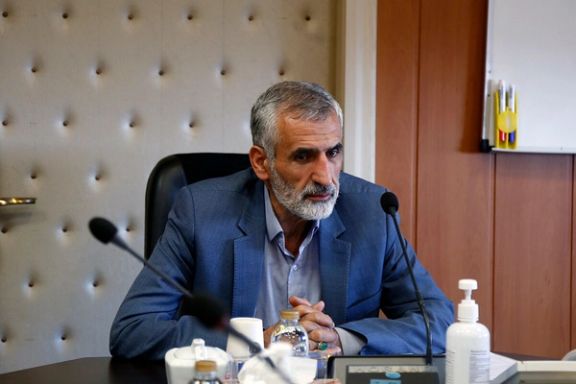
Iran’s deputy interior minister for security affairs said Nowruz travelers eating in public will be punished as the new year coincides with the Islamic fasting month of Ramadan.
Citing Article 638 of the Islamic Penal Code, criminalizing eating in public during the holy month, Majid Mirahmadi stressed that restaurants, cafes, coffee shops, and delicatessens are not allowed to provide services in the cities until the evening prayers call and the Iftar time.
“Some thought they could provide services indoors by covering up the glass and creating a veil; there is absolutely no such license,” Mirahmadi said.
The official further warned that the police will monitor “illegal activities” in these places and any “violation” will be dealt with.
According to the Islamic principles, those who travel more than 21.5 kilometers are not obligated to fast during Ramadan.
“There is no blame on travelers for not fasting … However, they must eat in secret. It is not possible for them to eat in parks and other public places. The sacredness of Ramadan must be respected,” Iran’s deputy interior minister for security affairs announced.
Annually, millions of Iranians travel during the New Year holidays. The coincidence of Nowruz and Ramadan this year and the government’s harsh measures to shut down restaurants before evening and punish eating in public can cause many problems for travelers, especially for children and the elderly.
Living for decades under the dictatorial Islamic government has prompted many Iranians, particularly the younger generations, to distance themselves from both the regime’s ideologies and the Islamic teachings and rituals.
In February, a study by the Ministry of Culture and Islamic Guidance revealed a significant decline in adherence to religious values, despite extensive ideological propaganda by the government in Iran.

The German Foreign Ministry has summoned the Iranian ambassador to Berlin over Tehran’s role in an attack on a synagogue in Bochum in November 2022.
According to the Düsseldorf Higher Regional Court, the attack was carried out by an Iranian state agency, read a statement issued on X by the German Foreign Ministry on Wednesday.
Berlin said it has shared the court’s verdict with its European partners and the EU institutions and is now considering “further steps” with regard to the case.
In December 2023, the Düsseldorf Higher Regional Court sentenced a 36-year-old German-Iranian, referred to as Babak J., to two years and nine months in prison for his role in the attack.
The charges against him included conspiracy to commit aggravated arson and attempted arson. Court documents reveal that Babak J. made unsuccessful attempts to recruit an acquaintance as an accomplice, who subsequently reported the matter to law enforcement authorities.
The incident in which a molotov cocktail was fired at a school beside the synagogue, resulted in only minor damage to the synagogue. German security officials linked the plot directly to the Islamic Revolutionary Guard Corps (IRGC).
Babak J. has also been linked to an earlier synagogue attack in the city of Essen. Reports indicated that he had also been planning a third attack on a synagogue in Dortmund, where he was eventually apprehended.
It is one of several Iran-backed attacks over the last year on Jewish or Israeli targets either carried out or foiled, in countries including Greece, Azerbaijan and Cyprus.
Over the past two years, many Iranian political activists and opposition figures have urged Western countries to designate the IRGC as a terrorist organization over its role in suppressing dissent in Iran and orchestrating attacks abroad.
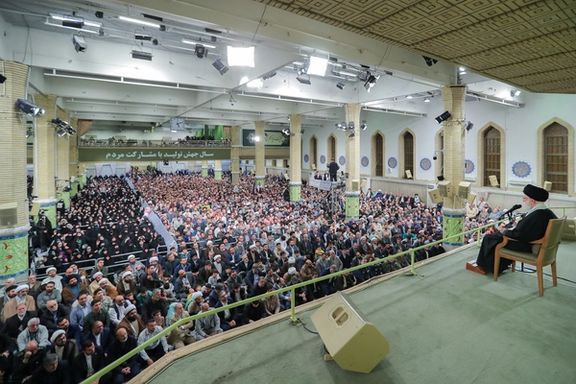
The US will have no choice but to leave the Middle East, Iran’ Supreme Leader Ali Khamenei said Wednesday, taunting the Biden administration amid a prolonged regional conflict.
“The Americans were looking to gain full control over this region,” he said, “they had this thought, mistakenly, that they’d [establish] their presence in Iraq, Syria, Lebanon, and across the whole region. The power of Resistance shattered their calculation; proved that that is not possible, and the Americans can’t stay in this region. They have no choice but to leave.”
Khamenei’s words – in his second speech on the first day of the Iranian new year– seemed to have been more public posturing, nevertheless, they did partly reflect the reality on the ground: the gradual waning of US supremacy in the Middle East, even though it’s still far superior to any other power in the region.
On the flip side, the Iranian regime has expanded its regional influence in recent years, even as it grapples with numerous, seemingly insurmountable crises domestically: a faltering economy, pervasive corruption, and a near-total breakdown in trust between the populace and the government following the unprecedented protests in 2022.
Critics of President Biden blame him for Iran’s belligerence. He has repeatedly said that his administration does not want escalation with Iran, which, according to the critics, nullifies any notion of deterrence.
“During Joe Biden’s presidency there have been more than 200 Iran-backed attacks on Americans in the Middle East – with over 170 attacks since October 7,”Congressman David Rouzer posted on X .” At the same time, Iran-backed Houthi attacks in the Red Sea are disrupting global shipping & endangering human life. Americans are less safe because of Joe Biden’s weakness on the world stage.”
In his speech, Khamenei did address the economy, the most relevant issue for Iranians. He also talked about the recent elections and political participation in Iran. But the central theme of his speech was foreign relations, and the current situation in the Middle East, in particular.
But he once again emphasized the role of the "Resistance Front" in the region, a label Tehran uses for a multitude of armed proxy groups that harass the United States, Israel and occasionally pro-West Arab states. Despite each having their specific domestic (or national) agenda, these armed groups converge on their opposition to American presence in the region and their enmity with Israel.
“It has become clear that the Zionist regime is suffering a crisis,” Khamenei said, “not only in terms of protecting itself, but also in terms of being unable to come out of the crisis. Because by entering the war in Gaza, it has become stuck in a quagmire. Regardless of whether it comes out of Gaza or not, it will have failed.”
The Israeli onslaught on Gaza is probably the biggest determinant of these groups’ actions at the moment. The Houthis in Yemen, Hezbollah in Lebanon and various groups in Syria and Iraq, have –to various extents– entered the war in support of the Palestinians,
“We are on the side and the supporter of whoever becomes involved in this great, human, Islamic jihad of principles,” Khamenei said, while calling Israel the source of “immense oppression” in the region that “must be cut off”.
Khamenei and his commanders in the Revolutionary Guards prefer to stay away from main theaters of conflict and have their proxies fight Israel.
Since last November, Hezbollah forces have been exchanging fire with Israeli forces almost daily. Armed groups in Syria have launched one-way drones against targets inside Israel. And the Houthis have all but blocked the Red Sea to all vessels with links to Israel. (direct or indirect), forcing major shipping companies to abandon the standard route and take a much longer one to the detriment of maritime trade and the consumers who eventually pay for any extra costs to businesses.
All these groups are known to be propped up by the Iranian regime. Although Iran insists that they all enjoy operational freedom and independence.
“Wherever it is in the region, be it Yemen, Iraq, Syria, or Lebanon, any measure that is taken by the fighting and brave Resistance forces, the Americans will attribute it to Iran,” Khamenei said. “In truth, it is the Resistance groups who make their decisions and take action.”
He then concluded, “The US doesn’t understand the people of the region and the brave, determined youth. This miscalculation will definitely bring the US to its knees.” Again, Khamenei's reference to the region's youth mainly involves groups under the Iranian regime's influence.

South Africa's Minister of International Relations and Cooperation, Naledi Pandor, stirred controversy on Tuesday by challenging the characterization of Iran as an authoritarian regime.
Speaking at an event hosted by the Carnegie Endowment for International Peace, Pandor questioned the well-documented nature of the Islamic government in Iran, stating, "I don’t know whether they are an authoritarian regime."
Her remarks come as South Africa faces heightened scrutiny over its relationships with countries like Iran, Russia, and China, as well as its pursuit of a genocide case against Israel at the International Court of Justice (ICJ).
The US House of Representatives Foreign Affairs Committee is set to consider legislation on Wednesday aimed at reassessing the US-South Africa relationship in light of these concerns.
Pandor defended South Africa's engagement with various countries, emphasizing the importance of dialogue and diplomacy. She expressed concerns about women's rights in Iran but asserted that cutting off communication with any nation would be counterproductive. "If we stopped talking to everybody because we define them in a particular way, I think the models we have adopted would not have any meaning," she stated.
Regarding the proposed US legislation, Pandor criticized it for potentially undermining sovereign independence and honest policy reflection. She warned against politicizing diplomatic disputes and urged for resolution through governmental channels.
In response to Pandor's comments, Representative Jared Moskowitz expressed his dismay, stating, "If she's defending Iran, I have nothing more to add on that."
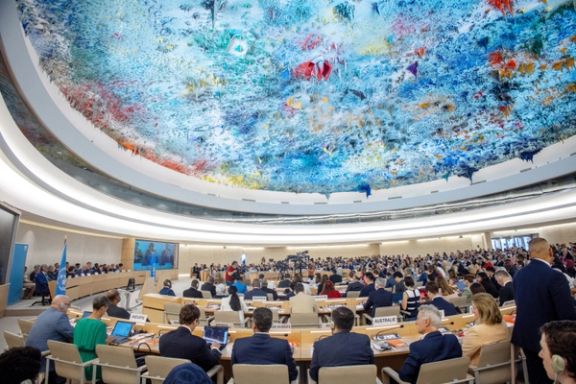
The prospect of Iranian officials facing criminal charges under human rights law took a big step forward in the current session of the UN’s Human Rights Council meeting in Geneva.
The two reports presented to the Council mark a watershed for Iran, giving impetus to the ending of impunity and new emphasis on legal accountability for those IR officials implicated in human rights abuses.
The sixth and last report from Javaid Rehman, the Special Rapporteur on Human Rights in Iran together with the meticulously detailed 400-page report from the Fact Finding Mission on Iran have opened a path to the formation of international tribunals and greater use of existing international jurisdiction to prosecute Iranians. Central to that is the collection of evidence which can stand up in a court.
That path is not yet named, but it has been signposted by the Special Rapporteur and the FFM. And being the UN, nothing will be speedy. But the change in direction signalled at the HRC has given a tremendous boost to the Iranian human rights activists in their many NGOs gathered in Geneva. And a unity of purpose among many of them.
Their mood is upbeat, Spring-like. In short, their hope is that if and when the current authority in Iran changes, IR officials will not be able to hide from the law, wherever they are. Flight to the West should the IR collapse would be hugely unattractive to those who might have once looked for visas to Canada and elsewhere if they face prosecution for crimes for which bodies like the FFM collect the detailed evidence. As one activist put it, “the threat of prosecution is more alarming than sanctions to the torturers and their agents”.
The Islamic Republic is on the backfoot in Geneva, as regards the HRC. The IR has always refused to recognise the UN mandate given to the Special Rapporteur since it began in 2011. And neither does it recognise the UN mandate given the FFM in the aftermath of the death of Mahsa Amini. But the protests following her death has changed everything for Iran at the UN. What was always a standoff, is now an impasse.

This mirrors the historic antagonisms between the IR and the West. Under the vast, moulded and coloured stalectite ceiling of the grandly-named Human Rights and Alliance of Civilisations Chamber where the HRC meets, Iranian diplomats sit expressionless listening to a catalogue of IR oppression, torture and killing. The standard response of IR diplomats in these sessions is to ignore the points made and attack the integrity of the Rapporteur. The IR response in this time was to veer off the subject altogether or make statements which in the circumstances could only be considered as bizarre. Thus for Somayeh Karimdoost, the IR deputy head of mission, Rehman is merely a British “pen-holder” for Western attacks on Iran. His report, she said, was not "reflective of Iran’s constant progress and promotion and protection of human rights”. Similarly, Gharib Abadi, head of Iran’s High Council for Human Rights, kicked off his response to the FFM report by singling out Germany as having supplied Saddam Hussein with the weapons to fight Iran. Germany, he claimed, was thus at the forefront of a campaign against Iran using a humanitarian veneer to cover a politically charged mechanism.
While Iran is a signatory to various international treaties which underpin international humanitarian law, it clearly does not share the same definition of human rights as understood in the Western democracies, even if the same term is used. To any observer, the lack of irony or self-contradiction in the IR response to the HRC Iran reports is striking (although not without unexpected humour. On the landing outside the 'Human Rights and Alliance of Civilisations’ chamber, right where TV. journalists do their lives, the Iranian Mission had put up an enormous banner celebrating ‘Iran: 100 Years of Multilateralism”, showing the IR flag fluttering over the Palais des Nations. Last year, the Mission put on an exhibition of headless models of women displaying Iranian national costume - headless, as that avoided the troubled issue of headgear).
Looking back at the past six years of his tenure as UN Rapporteur, Javaid Rehman told Iran International, “during those years of my tenure...we’ve gone through an unprecedented time; I hope that you and your viewers would agree that Iran and the Iranian people do not feel the same way as they felt six years ago. Iran is transforming, it’s a changing society.”
There is no going back. Rehman says that "After the Gina Mahsi Amini movement, the international community was galvanised and my mandate was very active to all perpetrators responsible for crimes. So we made a lot of effort. One of my achievements I would say is the work to establish an international mechanism.”
“Rehman put the issue of impunity and accountability on the table,” says Mahmood Amiry-Moghaddam of Iran Human Rights, a point echoed among other prominent human rights campaigners and many well-known lawyers. In that sense Rehman paved the way for the FFM, whose work he says, is to "conserve evidence for eventual accountability mechanisms and trials. I would encourage states to use universal jurisdiction wherever they find individuals who are alleged to have committed very serious crimes under international law."
What happens now depends on the votes on mandates for the post of Special Rapporteur and extending the FFM which happen on the 4th and 5th April, at the close of the 55th HRC Session. The Islamic Republic of Iran will be delighted to see the back of Rehman, but it looks unlikely that the UN will end the mandate as such for the role of Special Rapporteur for Human Rights in Iran. Speaking to Iran International, Rehman points out that anyone can apply for the job, but did not reveal whether he knew of any likely candidates. A new candidate will be selected and voted ion by the UN in July. Rehman says he really hopes the mandate is extended. “You see the seriousness of the human rights crisis in Iran, which requires a good repoprting mechanism to highlight all of this for the Iranian people,” he says. "I would love my successor to be able to have access to Iran, which the Iranian authorities denied me.”
That is unlikely. Iran will campaign hard for the vote against the mandate renewal and will have backing from such champions of human rights as the Russian Federation, Venezuela, Cuba and Zimbabwe. The FFM mandate extension is not guaranteed, as Sara Hossain, the chair of the FFM tribunal, told us, pointing out that Iran has a lot of friends. But its supporters are hopeful that there will be sufficient votes for the extension, which will allow it time to finish compiling the detailed evidence which would provide the basis of prosecutions and legal actions for redress and compensation for the victims of IR state oppression. When asked whether she would continue to serve as Chair of the FFM, Ms Hossain indicated she’d certainly consider it as she’d invested to much of herself in it so far.
The future for the IR cannot be predicted, but there is a fairly common view among the concerned UN community in Geneva that its current situation cannot continue, faced as it is with such internal opposition. Until that situation changes, the role of the HRC and its mandates for investigating human rights in Iran will remain a highly influential on the policies of the UN governments and many groups within Iran. The response of the IR at this session shows clearly the threat that poses for the IR itself.


